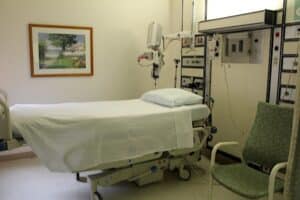More on the Obesity Awareness Month

What is the one thing more disappointing than the fact that sugar is not good for us? Learning that sugar substitutes can also be very harmful.
Childhood Obesity News has discussed neotame, as well as aspartame and other corn-based sweeteners, but let us not forget xylitol, which can be found in baked goods, candy, gum, and toothpaste. There is good evidence that xylitol causes platelets to clot and heightens the risk of arterial thrombosis, which in turn can lead to myocardial infarction (heart attack) and stroke,
And then, there is erythritol, which has 70% of sugar’s sweetness with only 6% of sugar’s calories. It comes from wheat starch or corn starch, fermented with a particular type of yeast, emerging as powdery white crystals. It enters the bloodstream, is not broken down by enzymes, and exits the body through urination. According to animal studies, it does not increase blood sugar or insulin levels:
For people who are overweight or have diabetes or other issues related to metabolic syndrome, erythritol appears to be an excellent alternative to sugar.
So, what could go wrong? After a period of optimism about the safety of this substance, it too became suspected of association with blood clots and heart attacks. Yet erythritol still seems to be regarded as the safest sugar alternative.
In the hospital
A fairly recent article about hospital care, which shows obvious concern for patient wellbeing, was written primarily for the benefit of medical professionals and institutions that wish to avoid being sued for malpractice. Consequently, it is a presumably comprehensive look at conditions that can cause unnecessary damage.
Adults with obesity are more likely to have risk factors for cardiovascular disease, prediabetes, bone and joint problems, sleep apnea, and social and psychological problems.
Obstructive sleep apnea (OSA), particularly in combination with heavy sedation and/or opioid pain medications, can cause severe postoperative respiratory depression. Before undergoing surgery, obese patients need careful evaluation, especially since OSA has typically been under-diagnosed. There is a very real danger that postoperative complications may go unrecognized, and that patients might be discharged prematurely.
Another cause for extra caution is the development of pressure ulcers (a.k.a. bedsores) due to the poor circulation of oxygen in fatty tissue. Upon admission and during the patient’s stay, hospital staff members need to carefully observe and document pressure ulcers. Frequent repositioning of the patient and a pressure-reducing mattress can go a long way toward preventing trouble of this sort.
Falling is of course a potential hazard for almost all patients, but obesity increases the possibility, so a “robust fall-prevention program,” including risk assessment and intervention planning, is strongly recommended.
Many of the special obesity-related concerns do not require extra expense, but in the areas of infrastructure and equipment, the budget may be severely strained. The needs include “oversized furniture, scales, MRI machines, OR tables, beds, wheelchairs, and gurneys.” Additionally:
Appropriately sized supplies such as blood pressure cuffs, bandages, gowns, and extra-long needles are also required. [F]loor-mounted toilets typically support much more weight than wall-mounted toilets, and doorways may be enlarged to facilitate sufficient clearance for wider wheelchairs and gurneys.
If properly sized MRI, CT, and other diagnostic equipment are not available at your facility, maintain transfer agreements with other facilities that can perform the diagnostic studies or assume care of the patients.
Of course, the article also recommends appropriate measures to make sure that hospital staff members are not injured in the care of obese patients.
Your responses and feedback are welcome!
Source: “Cleveland Clinic-Led Study Links Sugar Substitute to Increased Risk of Heart Attack and Stroke,” ClevelandClinic.org, 06/06/24
Source: “Erythritol — Like Sugar Without the Calories?,” Healthline.com, 09/14/23
Source: “Safely Caring for the Hospitalized Patient with Obesity,” TheDoctors.com, 06/15/2020
Image by Quinn Dombrowski/Attribution-ShareAlike 2.0 Generic






